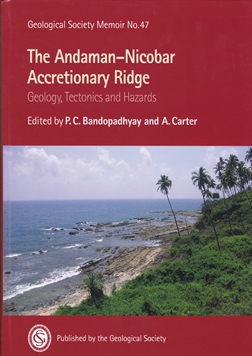
The Andaman-Nicobar Ridge which links the forearc islands west of Sumatra to the Rakhine (Arakan) ranges of western Myanmar is almost certainly the most poorly documented element of the Sunda-Banda subduction system. In part the lack of information can be traced back to the vagaries of imperial expansion.
The two archipelagoes, both now part of India, were Danish and then British colonies and the adjacent mainland is part of Thailand. It is only with the publication of this volume, complementing recent Geological Society Memoirs on Sumatra and Myanmar, that it has become relatively easy to view the Sunda system as a whole. Inevitably, most of the papers are written from an Indian perspective, but there are important contributions from Thailand.
It is a most peculiar margin. East of the India-Asia collision the relative motion of the Asian and Indo-Australian plates is accommodated by Sunda-Banda subduction but in the vicinity of the Nicobar Islands the convergence vector, normally at a high angle to the subduction trace, makes an angle of less than 45° with it. Further north, the vector is almost parallel to the Andaman Ridge but, despite this, there are two subduction-related volcanoes (one active and one dormant) in the marine basin between the ridge and the mainland.
This volume makes a major contribution to our understanding of this basin, presenting evidence for the dominance within it of hyper-extended continental rather than oceanic crust. Other papers focus on the geology of the islands themselves, and here the resemblances to the islands west of Sumatra are very striking. Many of the abundant and excellent photographs could equally well have been taken on one of those.
It is not just the photographs, but the maps and diagrams that are of high quality, and despite its multiple authorship the volume hangs together as a coherent whole. For me there was just one disappointment, and it is a rather personal one. The gravity field is discussed only very briefly and in the context of a regional map that is, inevitable, dominated by satellite-derived marine values.
Ophiolites, however, are important in the onshore geology, and in the Sumatra forearc we found that gravity measurements provided important insights into the distribution of these rocks in three-dimensions. They would surely have done the same for both the Andaman and Nicobar groups had they been presented. It is an omission that one hopes will be remedied in the near future, perhaps in the pages of the
Journal of the Geological Society.
Reviewed by John Milsom
THE ANDAMAN-NICOBAR ACCRETIONARY RIDGE: GEOLOGY, TECTONICS AND HAZARDS by P. C. BANDOPADHYAY & A. CARTER (Eds.) Geological Society Memoir 47 Published by the Geological Society of London: February 2017 ISBN 978-1-521-78620-281-9 237 pp. List Price £100.00
www.geolsoc.org.uk